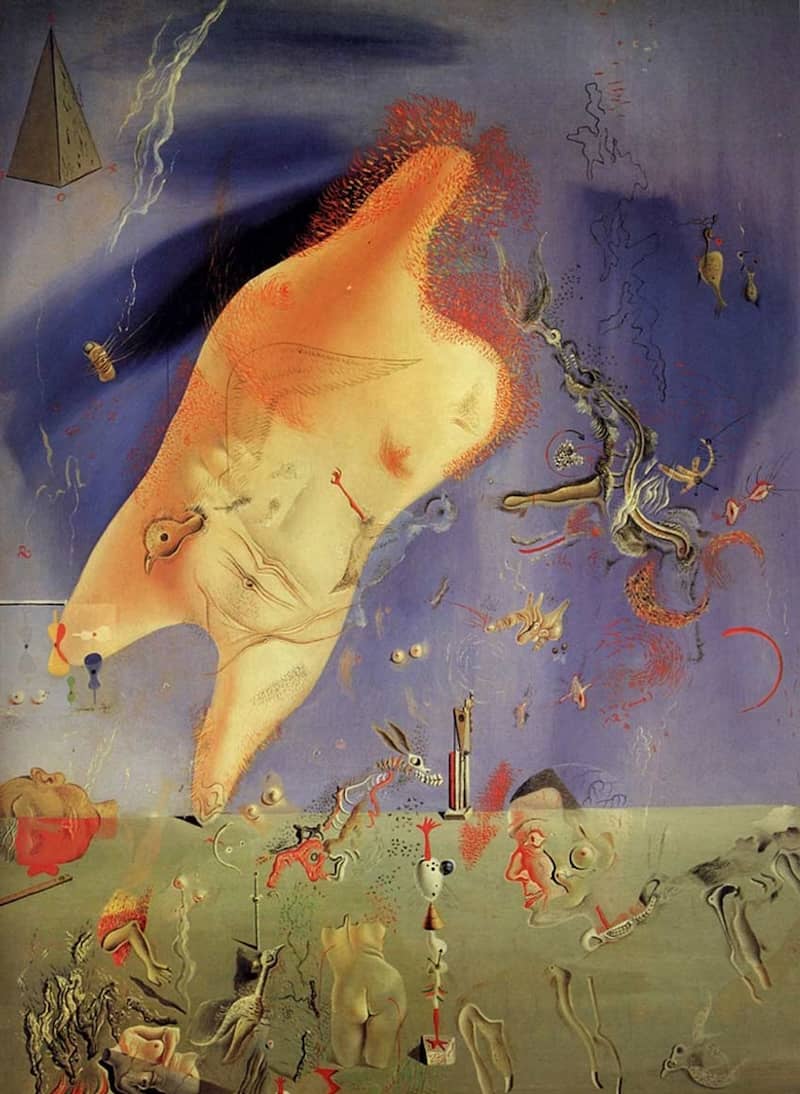Cenicitas (Little Ashes), 1928 by Salvador Dali

Cenicitas is one of the most striking of the paintings in Dali's new manner that dated from the summer of 1927. This was a highly individual experimental period when a private dialogue with his close friend Federico Garcia Lorca intersected with Dali's well-informed exploration of the avant-garde. Later that year, Dali wrote to Lorca that he was painting pictures that:
make me die of happiness; I'm inventing in a way which is purely natural, without a trace of artistic consideration... now I'm painting a beautiful woman, smiling, convulsed with multi-colored feathers...and there are donkeys in the sky with heads of tiny parrots..."
The stylistic clashes - a meticulously painted, academic nude torso contrasting with the rudimentary, even caricature-like birds and donkey, and the Purist-style guitars - confirm Dali's claim to be melding Cubism, Surrealism and "a Breughel-like Primitivism." Cenicitas was originally known as The Birth of Venus, but was exhibited under the title Sterile Efforts in a collective exhibition of painting and sculpture by Spanish artists resident in Paris at the Botanical Gardens in Madrid in March 1929. Under the same title, Les efforts steriles, Dali included it in his first one-man exhibition at the Goemans Gallery in Paris in November 1929, where it is dated 1926, and again at his 1931 exhibition in the Pierre Colle Gallery, where it is dated 1927. However, it seems likely that Dali worked on it over the winter 1927-28. It is signed and dated 1928. The picture was in Dali's own collection at his death in 1989.























